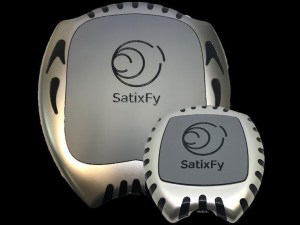SatixFy UK, designers of next-generation satellite communication chips and systems, has introduced its full Electronic Steered Multi-Beam Array Antennas (ESMA). The scalable architecture supports any antenna size up to 1 million elements (in Ku-Band 10 m by 10 m), any frequency through a dedicated RFIC, any polarization including circular and linear simultaneously, any shape including conformal arrays and up to 32 beams both in receive and transmit.
The antenna, based on a fully digital beam forming technology, supports an instantaneous bandwidth of over 1 GHz and works in both TDD and FDD modes. Expected array efficiency is better than 70%. The antenna includes an Antenna Control Unit (ACU), self-calibration capabilities, and on-chip trigonometric calculator for fast tracking and beam steering.
The antenna supports any external modem through an L-band interface but is best utilized when closely coupled with the company’s current 500 MHz baseband modem chips (Sx3000). ESMA antennas use less power based on waveform duty cycle. If there is no traffic, no power will be needed from the antenna, such as in DVB S2X time slicing (Annex M).
With its integrated modem, the antenna supports various operational modes such as TDD (half duplex) and FDD (full duplex), very fast Acquisition and Tracking. The SatixFy baseband chip can also serve as an additional DVB S2X overlay. The company’s next generation 1 GHz baseband chips will enable the simultaneous use of eight beams and eight modems out of a single antenna, through a single modem chip and a single Ethernet port providing both data and control.
“This is truly a remarkable product,” said Yoel Gat, Chairman and CEO of SatixFy. “Until now, most phased array antenna solutions had limitations mainly in terms of power per element and price. SatixFy designs its own silicon chips on very advanced silicon processes. Our chips enable our unique digital beam forming design, capable of lower power per element. The cost structure is now based on silicon economics as all our algorithms and innovative antenna designs are implemented in Silicon”.
The company is also in the process of developing an aero antenna through the recently announced joint venture cooperation with Singapore Technologies Engineering (STE). Other applications using SatixFy’s ESMA technology are multi-beam payload for solar drones and small satellites, self-installed fixed antenna, multi-beam DTH antenna, connected cars and mobile Rx only antennas for Satellite TV in cars.
“Expect to see a lot of innovation coming from us in the next months and years”, continued Gat. “We will address multiple markets and offer great performance that seemed imaginary only a few months ago.”

